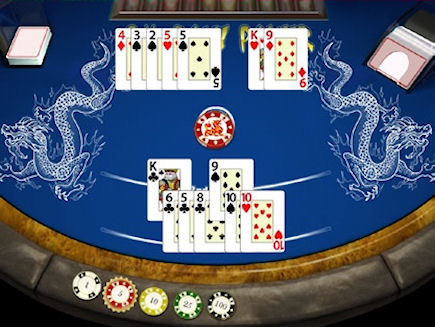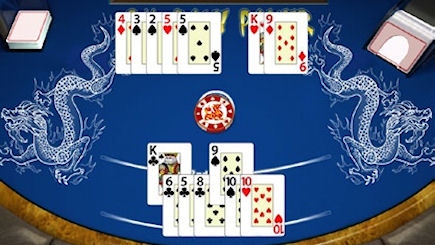This article first appeared in the Jul/Aug 2013 issue of World Gaming magazine.
Pai Gow Poker has never really caught on outside of the United States, but the game is a lot of fun and doesn’t break the bank.
Pai Gow Poker may have suffered simply because of its name – it doesn’t have much to do with Pai Gow nor a lot to do with poker. The game, however, is incredibly enjoyable to play and is popular with players who tend to enjoy skill based games over games of chance.

Pai Gow Poker is not a poker game; it is a table game. In that way it is exactly the same as Fortune Three Card Poker, Caribbean Stud and Texas Hold’em Bonus. The game has a low house edge if played properly and there are ways you can decrease that edge even further if you learn it inside out.
Pai Gow Poker is not to be confused with the tile game, Pai Gow. For an explanation of the tile game Pai Gow, you can read our series on the game by visiting wgm8.com and searching “Pai Gow part A” (with the quotes).
Pai Gow Poker was invented by Sam Torosian in 1985 but he probably wishes things worked out differently. Torosian apparently received some bad legal advice at the time telling him he couldn’t patent the game. When he started spreading in the Bell Card Club in Southern California there was nothing stopping other casinos copying the game and offering it to their patrons without paying royalties to the creator. This is another reason it is strange the game hasn’t spread more rapidly without the legal restrictions some of the newer games come attached with.
Pai Gow Poker has been described as “an Americanized version of Pai Gow” but although there are some similarities this is far from a convincing description. The game has proved popular, however, with many Asian-Americans.
The basic structure of Pai Gow Poker is identical to Pai Gow, with the player playing against the dealer and having to set the two highest hands he can from the cards he is dealt. The lower of these two hands is called the low hand and the higher of the two hands is called the high hand. For the player to win, his low hand must beat the dealer’s low and his high must beat the dealer’s high. For the player to lose he must lose both hands to the dealer. If the dealer and the player win one hand each the bet is returned to the player. This basic structure is exactly the same as Pai Gow.

Pai Gow Poker – much quicker when played online!
The payout structure is also the same as Pai Gow with a winning bet paid at even money minus a five percent commission to the casino.
Outside of these basic mechanics, the similarities between Pai Gow Poker and Pai Gow are basically non-existent. Let’s compare the stark differences.
- Pai Gow poker is played with a standard 52 card deck plus one joker, not with 32 tiles like Pai Gow.
- In Pai Gow Poker the player receives seven cards while in Pai Gow the player receives four tiles.
- In Pai Gow Poker the player must use two cards to create his low hand and five to create his high hand. In Pai Gow the player uses two tiles to create each of his hands and both hands are structured exactly the same way.
- Pai Gow Poker loosely uses the traditional poker hand rankings whereas Pai Gow has its own ranking system that has nothing to do with poker at all.
THE BASICS OF PAI GOW POKER
- Every player at the table is dealt seven cards.
- Players must divide their seven cards into two separate hands. Two cards (placed at the front) known as the low hand (or “front hand”) and five cards (placed at the back) known as the high hand (or “back hand”).
- The high hand must be higher than the low. This means that if you are dealt a truly horrible hand you can’t just try and win the low hand by making it stronger at the expense of the high hand.
- The Joker can be used as a wild card in any straight, flush or straight flush. Otherwise it is considered to be an Ace. You have to be mindful of this as new players often think their high hand is three of a kind or a full house when they really just have a pair or two pair (respectively) and the joker.
- The traditional poker ranking system is used for the high hand.
- The low hand can be a pair or a non-pair. The highest low hand would be a pair of aces and the lowest possible hand at the front would be 3-2. So a good way of looking at it from a poker perspective is that in Pai Gow Poker the low hand is ranked in a similar way to the hole cards in Texas Hold’em, but with any pair beating AK.
STRATEGY
Like Pai Gow, there is what is known as the “house way” of setting your cards. This can be very helpful when you are just learning to play the game and can avoid costly mistakes. For the most part you want to keep both hands fairly close together unless you sacrifice the strength of one of your hands trying to secure a push.

A very experienced player can maximize their percentage against the dealer by playing their cards differently to the house way but this is complex and difficult to master. For example, there are spots where you should and shouldn’t split pairs between your two hands (if you are dealt two high pairs it is always correct to use one on your low hand and the other in your high, but pairs of lower values become trickier). Another way to maximise your wins is to bet small when not acting as the banker, and trying to cover much larger bets when acting as the banker.
The best way of maximizing your advantage is to take the bank and play against the whole table when it is your turn to decide whether you want to bank or not. This means that you get the advantage of sometimes scooping multiple hands. There are two downsides to being the banker. Firstly, it can be expensive if you are playing on a full table, as you must cover all the bets. Secondly, you can find great camaraderie with the other players when playing against the bank because you will usually all win when the dealer is dealt a bad hand, so expect the table to turn on you if you take over the bank. After all, many people gamble for entertainment and to take on the establishment, not to take on other players.
THE BATTLE FOR WORLD DOMINATION
There appears to be two major reasons why Pai Gow Poker has failed to make an impact outside of America.
First, the game is not profitable for casinos when you compare it to other table games like baccarat. It takes a long time to deal, adjudicate and pay out winning hands. It also takes a reasonable degree of expertise to deal the game. But the most damning thing is that there are so many pushes – over 40 percent of all hands dealt. This can be a joy for the player as he gets a lot of bang for his gaming buck but the casinos want rapid turnover, so Pai Gow Poker can be a real turn off for the house. The game is also quite good value for the player as the house edge is just 2.7 percent (when both hands are set “house way”) and only 1.7 percent if the player runs the bank whenever the opportunity presents.
The second major problem for the casual gambler is that the game has to be learnt. Pai Gow Poker is not like a game of roulette or baccarat where the basics can be covered in 10 seconds of instruction. If you have an understanding of the poker ranking system it won’t take you long to pick up Pai Gow Poker, but remember the game has its nuances that you need to learn or you will make mistakes that will cost you money.







